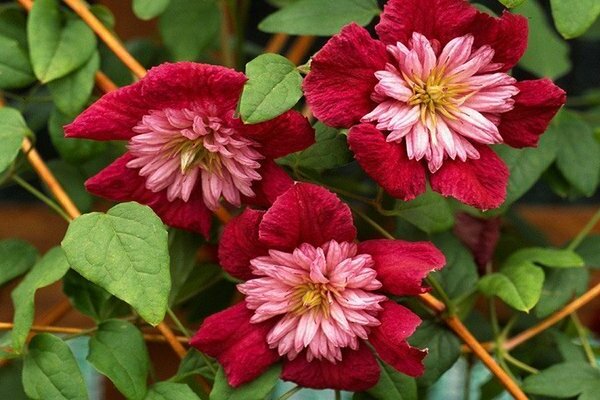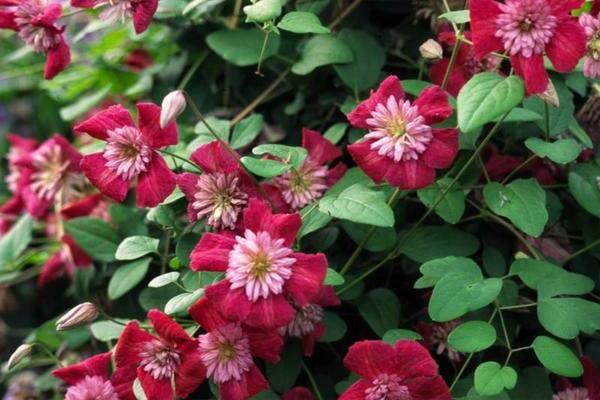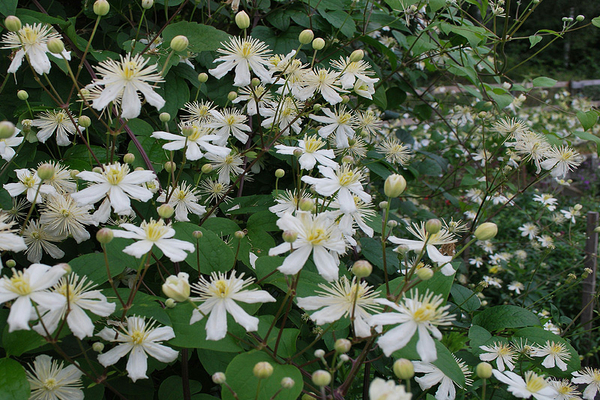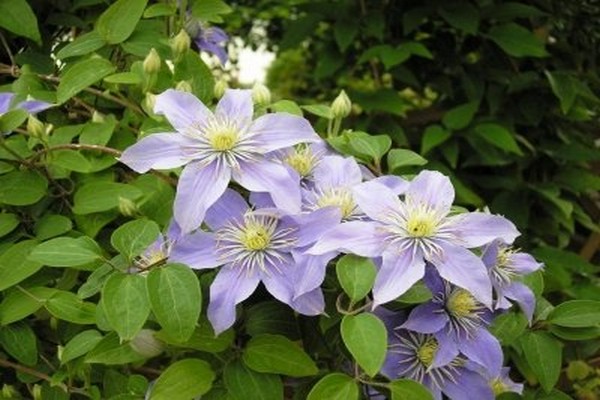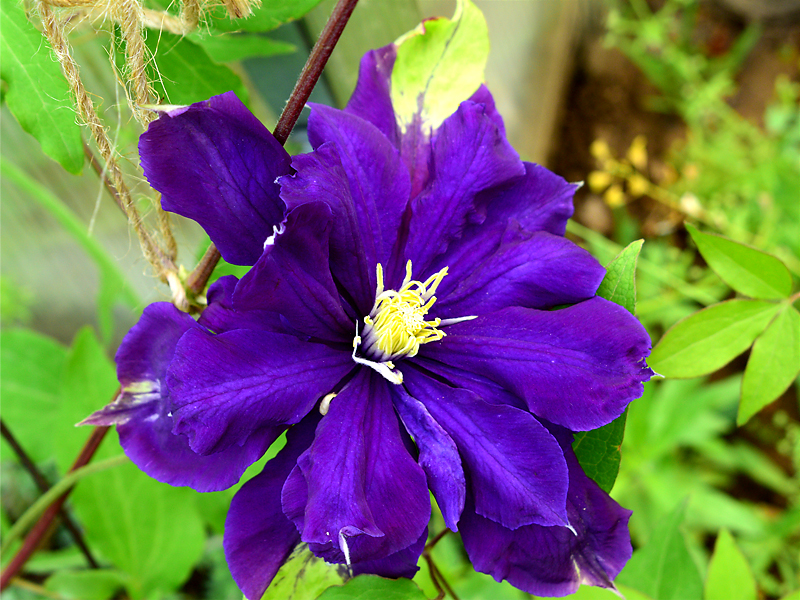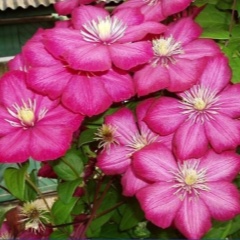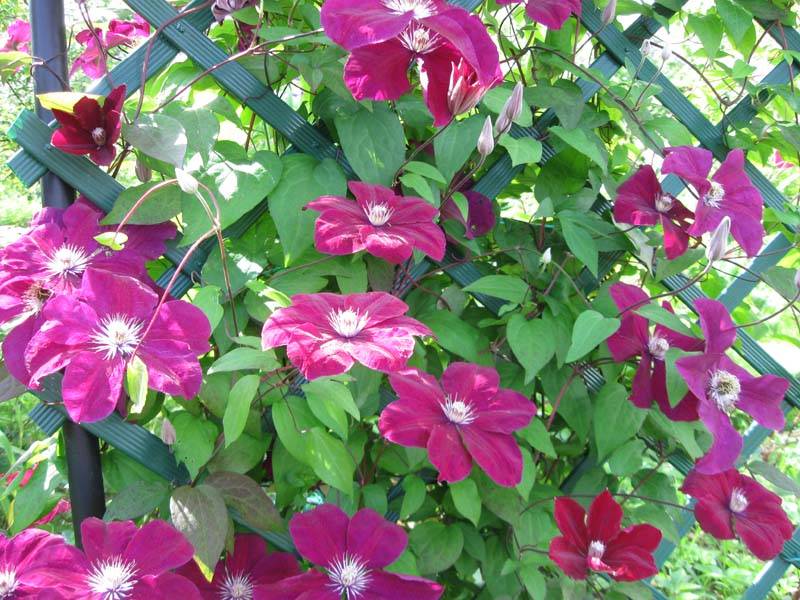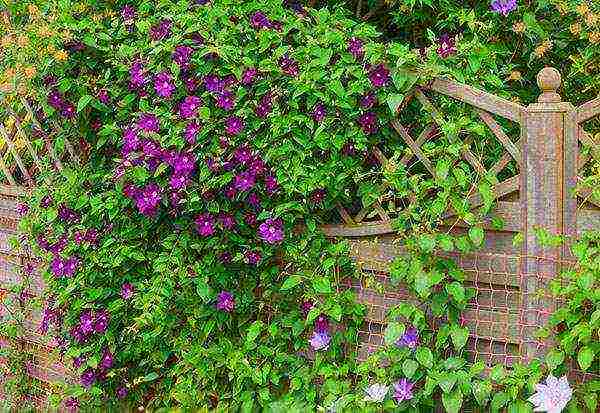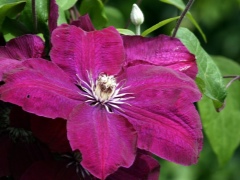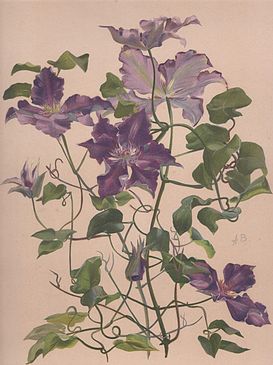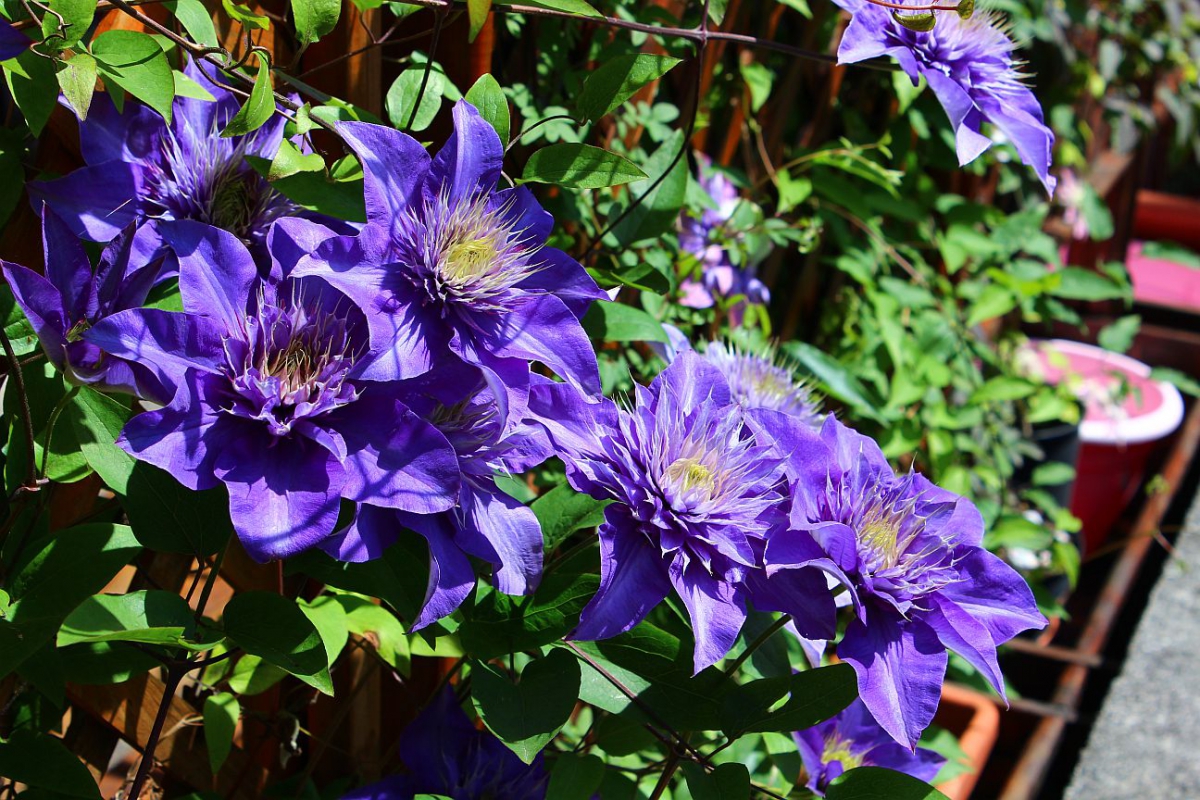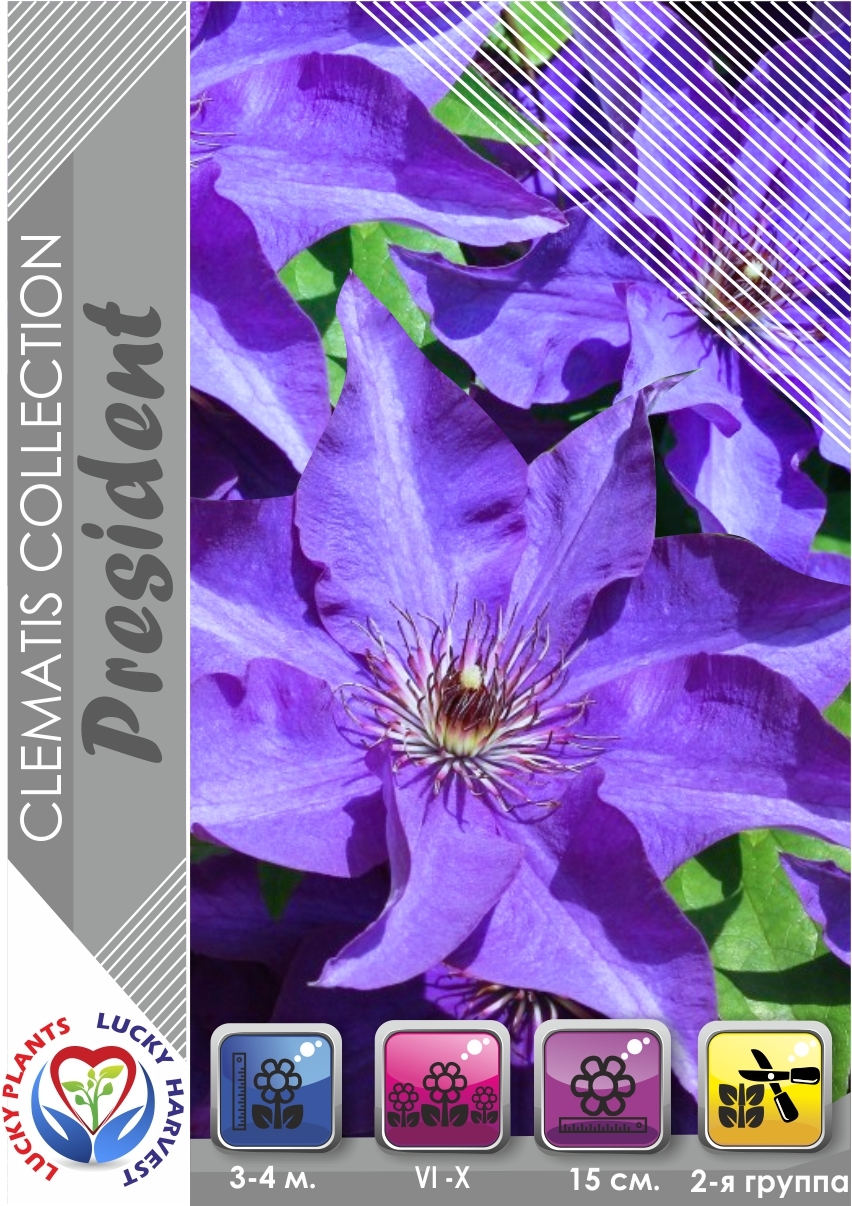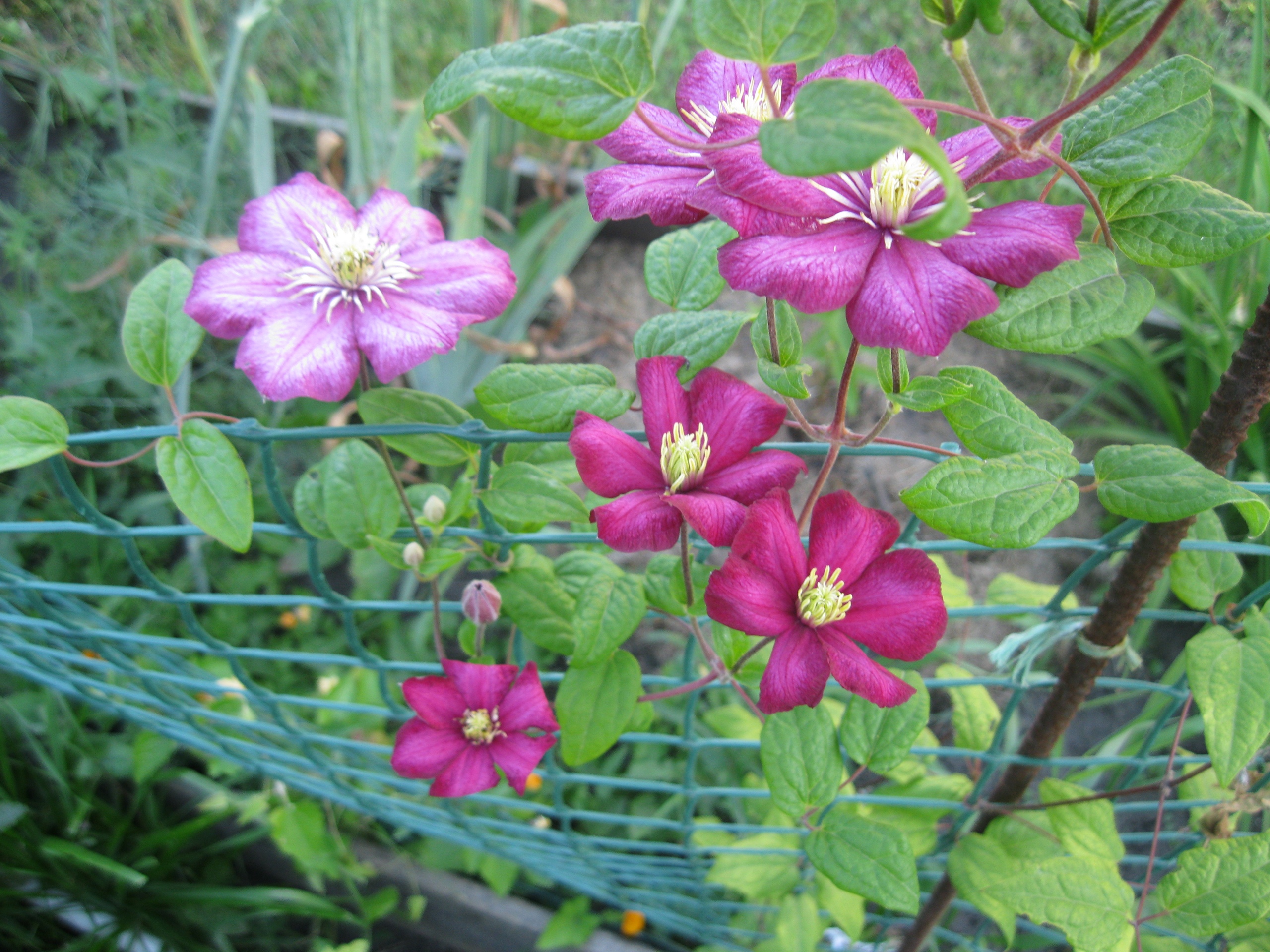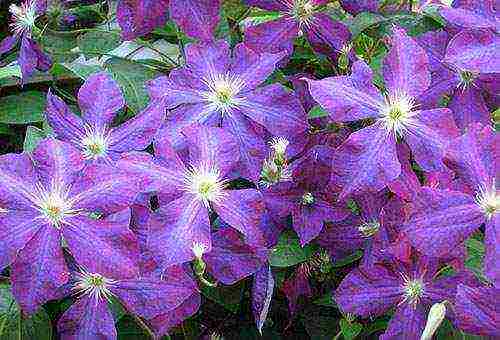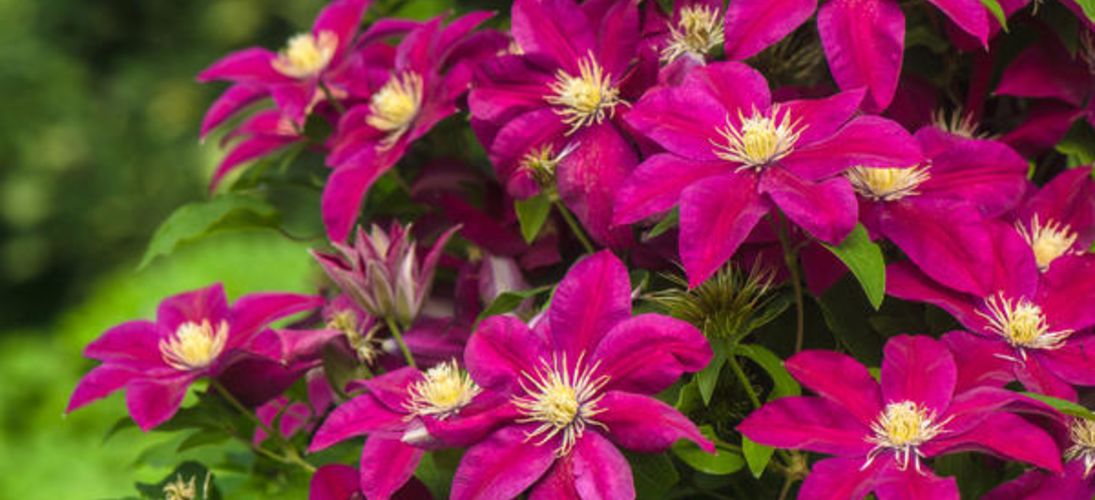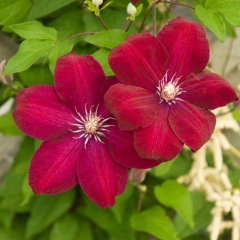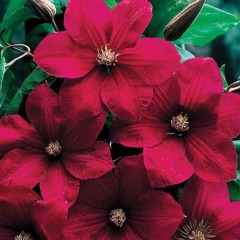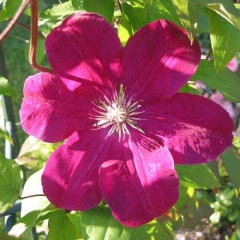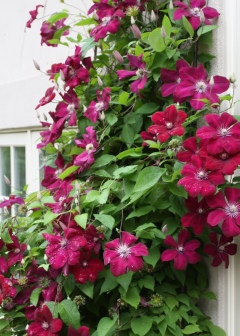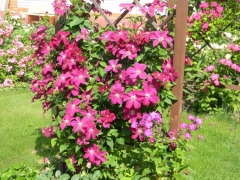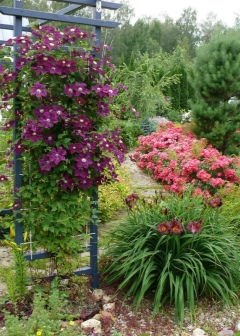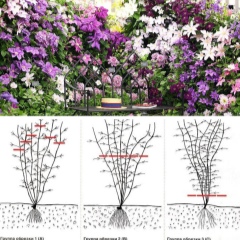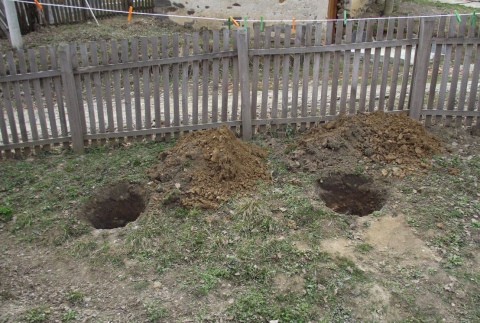Landing rules
Clematis are quite unpretentious plants, but they also require a special approach to rooting in the open field. This is due primarily to the fact that a blooming culture is able to delight the gardener with its flowering in one place for quite a long time, therefore, when planting, no mistakes should be made that can adversely affect the culture in the future.
Experienced gardeners recommend preparing a place for planting a young plant in advance in 2-3 weeks. To do this, you need to dig a hole, the dimensions of which must be at least 60x60 centimeters. It is best to root clematis in a special substrate consisting of sand, humus, garden soil and dolomite flour with superphosphate. The seedling is placed in a hole with a third of the volume of the prepared substrate at the bottom, the root system is straightened, and then covered with the remaining soil.
When planting, it is important to pay attention to the level of deepening of the root collar into the ground. If clematis "Comtesse de Boucher" is planned to be grown in a mild climate, then it should be deepened by no more than 10 centimeters; for regions with a harsh climate, it is not recommended to deepen the seedling too much. In this case, it is most correct to additionally cover the soil near the plant with a layer of mulch.
In this case, it is most correct to additionally cover the soil near the plant with a layer of mulch.
Another important nuance regarding the planting of flowering vines is the installation of supports for shoots, which stand out for their impressive size, so they can easily be damaged by their own weight. Supports for flowers are placed in advance at a selected place near the hole. Immediately after rooting, it is most correct to tie the flower, the further consolidation of the culture on the supports will occur independently.
As for the place where clematis is grown in the garden, there are some useful tips in this regard.
- In order for a culture to bloom profusely, it is best to equip flower beds with such crops in places that are not deprived of natural light. Options with flower beds in partial shade will also be suitable.
- The place must be reliably protected from drafts and gusts of wind, since the vine can suffer from such conditions of detention.
- Despite the fact that the culture belongs to the moisture-loving group, the presence of closely located groundwater can adversely affect the condition of clematis. If it is not possible to find another location, it would be most correct for clematis to make an artificial hill, the height of which will be at least 15 centimeters.
- You should not plant the culture too close to the fence or wall of the house. The distance from the fence should be at least 50 centimeters, and close proximity to structures should also be avoided so that rainwater does not flow onto the flower bed.
- The best time for planting is late spring or early autumn. The first option will be the most preferable, since it will allow the culture to adapt more quickly to new conditions. Closed-root planting material can be rooted outdoors even in the summer months.
Clematis Rouge Cardinal: cultivation of a variety
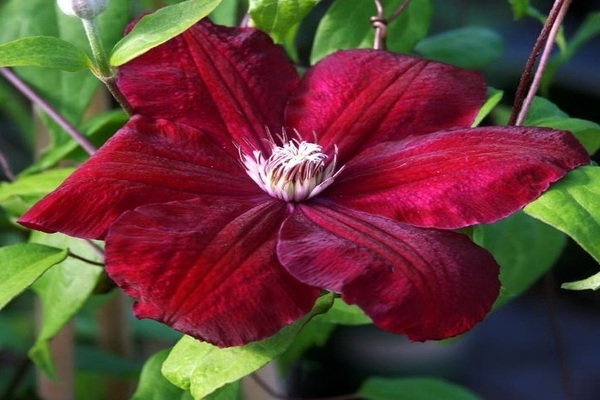
Clematis Rouge Cardinal: photo of the rouge cardinal variety
Any garden plant, even an unpretentious one, must be properly looked after.
How to sow seeds.
To grow clematis with seedlings, you need to purchase them at a flower shop. The bush can be put up for sale in a plastic pot, it already contains nutrient soil or it cannot be there. Planting material with a bare root system is not the best choice.It is better to grow a bush from grains, this is how a large number of gardeners grow clematis.
If you decide to grow a hybrid clematis variety Rouge Cardinal at home, first prepare a planting site. A planting hole is dug for one seedling. Its dimensions: depth and diameter - 0.6 m each. At the bottom of the pit, a 15 cm layer of drainage is laid, which includes small stones or broken brick. Further, the pit is filled with humus, rotted manure or compost fertilizer from foliage. The remaining volume of the planting pit is filled with a fertile soil mixture. The landing hole is prepared 30 days before landing. During this time period, soil subsidence, the settlement of beneficial microorganisms, and the mixing of humus with the earth with earthworms will occur.
The sowing time of seeds is determined by their size. Large seeds are strong. Sowing is carried out late in the fall before the winter season. To obtain reliable shoots, the seeds undergo a stratification process lasting 3 months under temperature conditions of +5 degrees, and are sown in the spring season.
Small seeds in the soil may not survive the winter season. Therefore, such grains are sown only in the spring season. The optimal time is the first and second spring months. Sowing seeds takes place in open soil, or a small greenhouse is set up so that the seedlings come out soon.
Seed germination is low, they germinate for a long time. Therefore, flower growers prefer ready-made seedlings to seeds.
- Before planting seedlings, a trellis is installed near the prepared planting pits. The height of the props above the surface soil layer is 2 meters, not less. If the bush grows near the building, then the interval between the planting pit and the wall should be 20 cm or more. The tapestry is placed at a distance of 10 cm from the pit.
- If the seedling was grown by seed in a glass, then it should be planted like this.
- Preparing a seedling for planting begins with the fact that you need to inspect the root system. If the roots are dry, then they must be soaked in cold water.
- One part of the fertile soil is removed from the well prepared in advance. An earthen mound is formed at the bottom and is slightly compacted by hand.
- A seedling is installed on the mound. The root system spreads out along the edges of the hill. If the seedling was pulled out of a glass with an earthen lump, then this is how it is placed on a hill.
- Next, the root system is covered with fertile soil pulled out of the pit. The root collar and part of the stalk are filled up.
- When the plant is finished planting, abundant watering is carried out with water at room temperature conditions.
When planting a group of large-flowered clematis Rouge Cardinal (rouge cardinal), an interval of 1.5 m should be left between them. The growth of the vines should be observed throughout the summer period. If the variety is suppressed, the vine grows a small amount of cm, therefore, the bush does not grow in the area that it needs. It remains only to transplant the vine in the next spring season to another place.
Features of the variety: harmonious tandem of characteristics
Clematis is rightfully considered the king of lianas, because it is not difficult to care for, while it pleases with beautiful flowers of different shapes and shades. It is used for vertical gardening, for ennobling pergolas, gazebos, trellises, walls.
Breeders breed hybrids that delight with different shades of flowers, powerful vegetative mass, and unpretentious care. And among the colorful hybrids, Rouge Cardinal stands out, which was obtained by crossing the varieties Ville de Lyon (1899) and Pourpre Mat (1914). He was bred in 1968 (a hybrid from the Jacquemann group) and received a set of the best qualities from his "parents".
It differs from others:
- height - 2-4 m, depending on the conditions of care;
- flower shade - red-purple, diameter - 12-16 cm;
- flowering period - summer-first month of autumn;
- exposure - S / V / S / W;
- trim group - strong, 3rd.
Clematis flower
A striking feature of the variety is the ability to grow in containers, which makes it possible to decorate a loggia / balcony in an apartment. However, the dormant period of such a flower is lengthened.
Care and pruning of handsome clematis: simple rules
Clematis, delighting with beautiful purple flowers and rich green leaves, is a real decoration of the garden. But in order for the plant to be healthy and develop correctly, it is necessary:
water once every 7 days (in the first years of life), when the flower grows - watering should be increased. In this case, the soil should be wet, but not flooded;
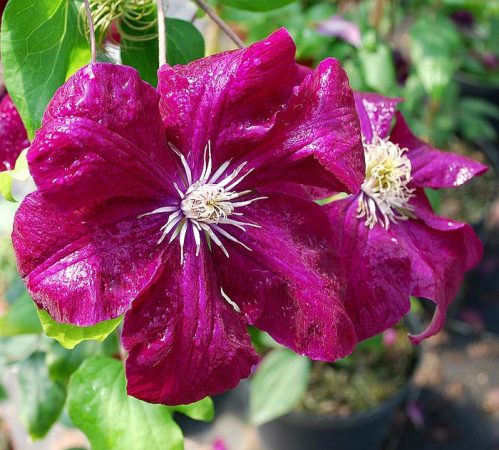 Don't forget to prune your plant
Don't forget to prune your plant
- feed several times during the growing season. In this case, it is best to combine root dressing and leaf dressing, using organic and complex mineral fertilizers;
- free space from weeds, loosen the soil after rains.
The beauty and power of a bush depends on proper pruning. The Rouge Cardinal variety belongs to the 3rd group, which means that it needs to be cut off every year, leaving the shoulders-sleeves of 20-30 cm / 50 cm, on the young shoots of which flowers will appear the next year. At the same time, on 1 bush, several shoulder-sleeves can be formed in a year, pinching the shoot after it grows by 15 cm, then after the growth of the stepsons by 25-30 cm.
Rouge Cardinal will enchant you with its velvety texture, richness of purple and ease of care. It remains only to correctly lay the planting hole and learn how to properly cut the vine (5-7 cm above the bud), guide the pruner. But this is an experience that has been accumulated over the years. It will be easier only for those who grow grapes. And in your garden there will be a true handsome man, charming!


